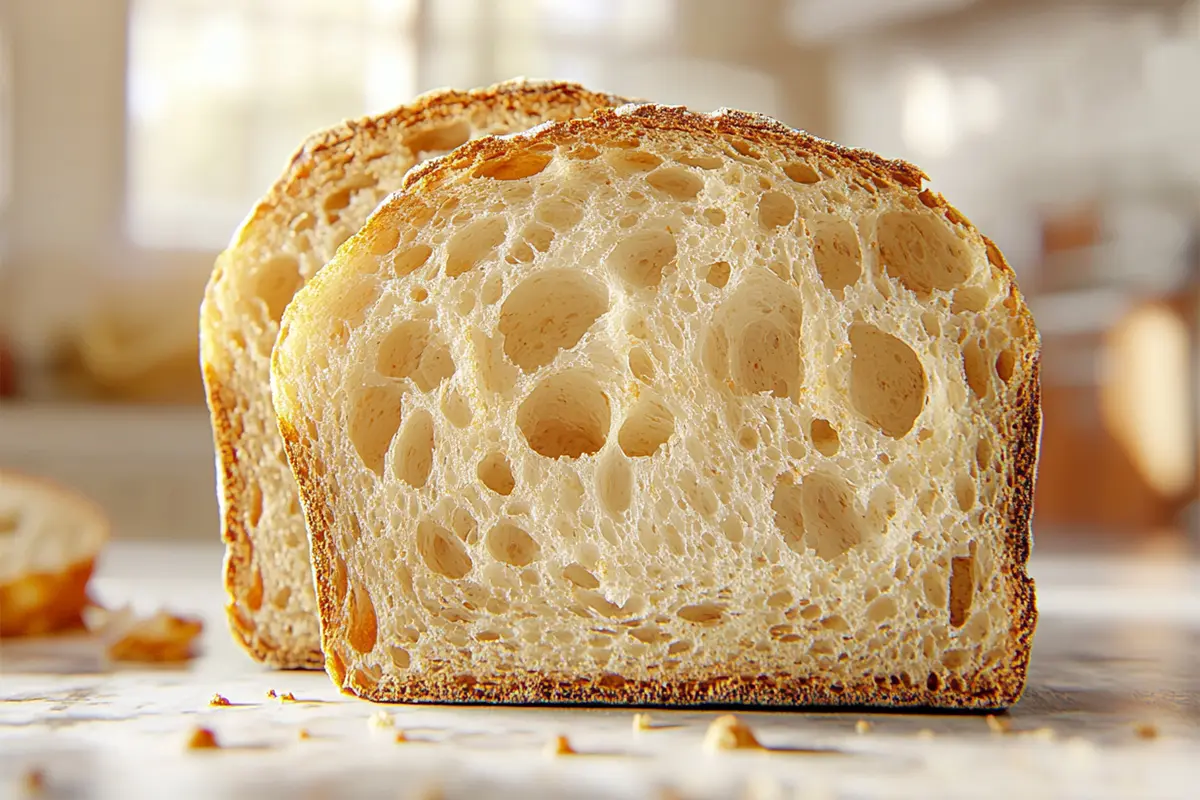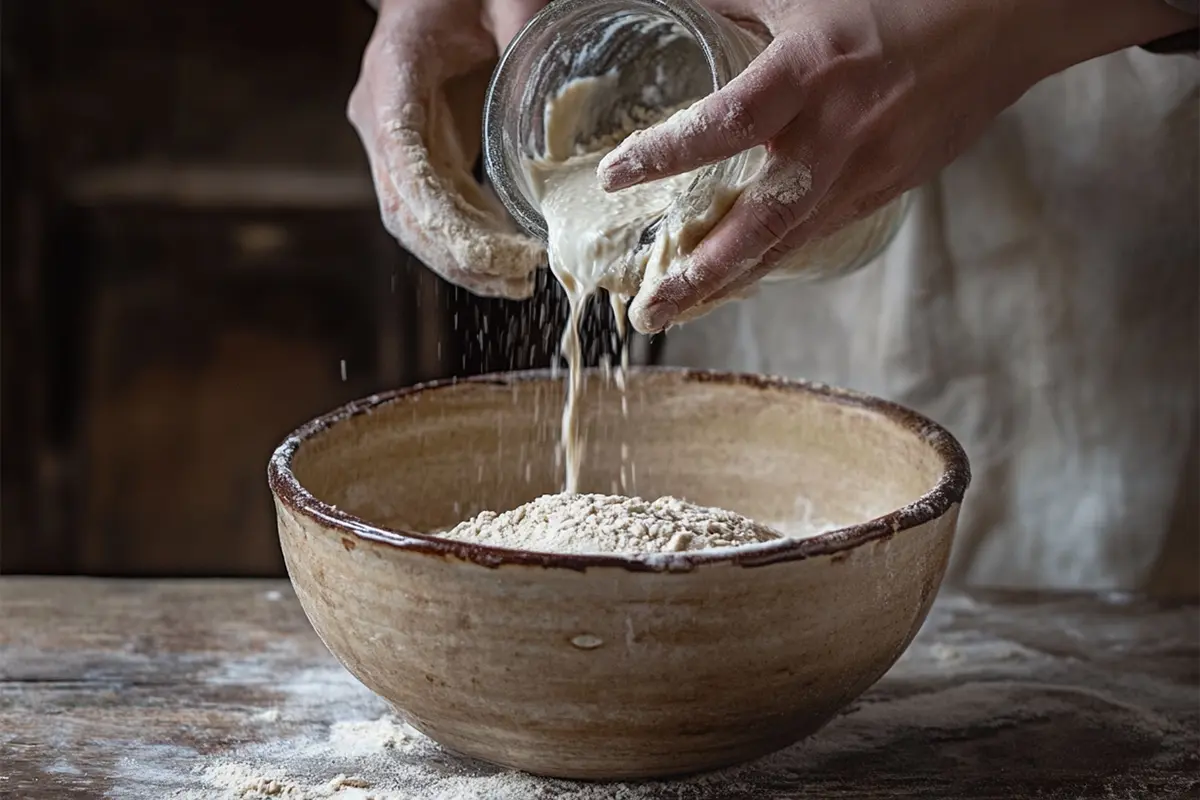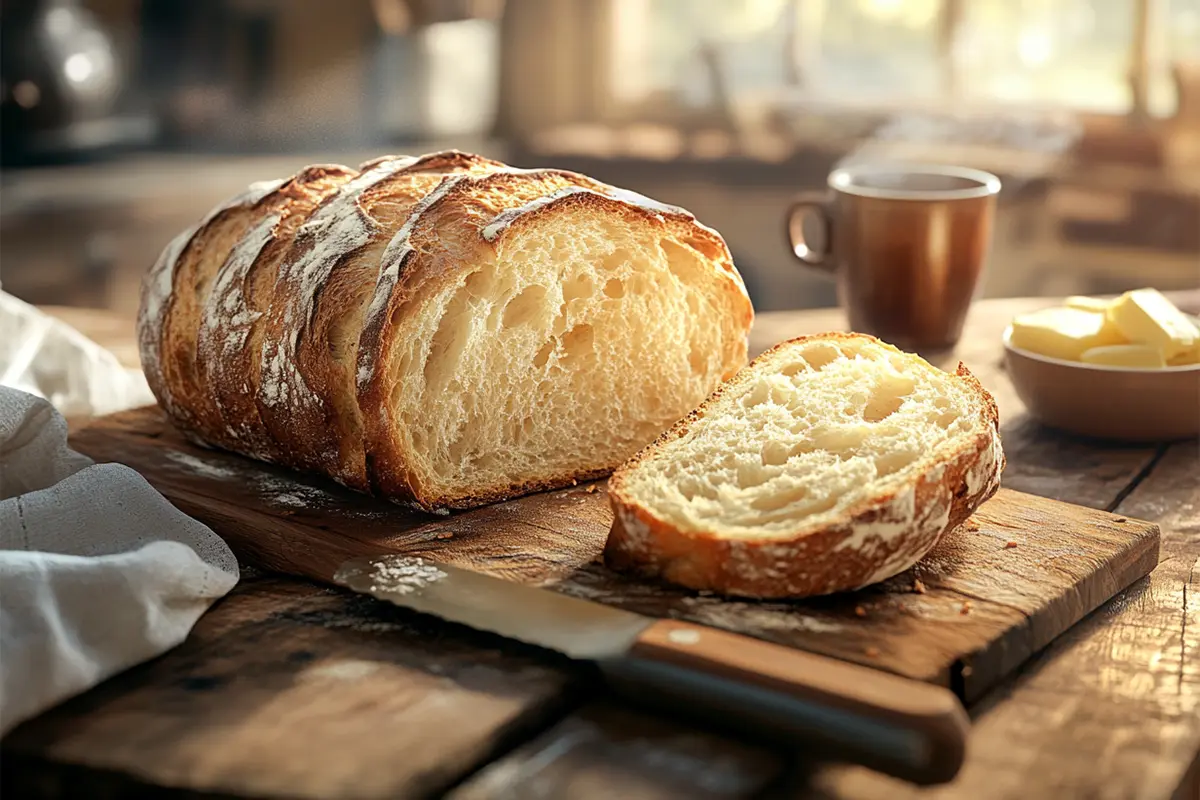Sourdough bread is famous for its tangy flavor, setting it apart from other types of bread. This sourness is not a random byproduct but a carefully developed characteristic, deeply rooted in the natural fermentation process. But what exactly gives sourdough its unique flavor? In this article, we’ll explore the science and techniques that create the distinct sourness in sourdough bread.
Introduction to Sourdough Bread
Sourdough bread has a rich history, dating back thousands of years, long before commercial yeast was available. This bread relies on a natural fermentation process involving wild yeast and lactic acid bacteria. These microorganisms leaven the bread and contribute to its unique flavor.
The secret behind sourdough’s tang lies in the interplay between these factors, each adding to the final taste. By understanding these elements, bakers can adjust the sourness to their liking, creating bread that is mild or tangy depending on preference. Learn more about the history and science of sourdough bread.
The Science Behind Sourdough’s Flavor
Natural Fermentation
Natural fermentation is key to sourdough’s flavor. Unlike bread made with commercial yeast, which uses a single yeast species, sourdough fermentation involves a symbiotic relationship between wild yeast and lactic acid bacteria. These microorganisms are found naturally in flour and the environment. Together, they leaven the bread and produce its distinct taste.
- Wild Yeast: Wild yeast strains in sourdough starters are less predictable than commercial yeast. They ferment sugars in the dough more slowly, allowing more complex flavors to develop.
- Lactic Acid Bacteria: These bacteria produce the acids that give sourdough its tang. Two primary acids are produced during fermentation: lactic acid and acetic acid. Lactic acid is mild, contributing a yogurt-like tang, while acetic acid is stronger, adding a sharp, vinegary taste.

The Role of Acids
The balance between lactic acid and acetic acid determines the sourness of the bread. Lactic acid forms more at warmer fermentation temperatures and higher hydration levels, creating a mild, creamy tang.
In contrast, acetic acid is produced in cooler fermentation conditions and with lower hydration levels, leading to a sharper, more pronounced sourness similar to vinegar. Bakers can adjust fermentation conditions to influence which acid dominates, controlling the bread’s overall flavor. Understand how lactic acid bacteria contribute to sourdough’s tangy flavor.
Impact of Fermentation Time and Temperature
The length of fermentation and the temperature at which it occurs significantly impact sourdough’s flavor. Longer fermentation allows more acid production, increasing the bread’s sourness. However, temperature plays a crucial role:
- Warm Fermentation (25-30°C): This promotes lactic acid production, resulting in a milder sour flavor.
- Cool Fermentation (15-20°C): This favors acetic acid production, leading to a sharper, vinegary sourness.
Bakers can adjust these variables to fine-tune their sourdough’s flavor profile, achieving the desired tanginess.
The Role of the Starter in Creating Sourness
Starter Maintenance
The sourness of sourdough bread is heavily influenced by how the starter is maintained. The feeding schedule, hydration levels, and the type of flour used all affect the activity of the wild yeast and bacteria, and consequently, the flavor of the bread.
- Feeding Schedule: A well-fed starter is more active and produces a milder flavor. Allowing the starter to mature longer before feeding can result in a more acidic, tangy taste.
- Hydration Levels: A higher hydration starter tends to favor lactic acid production, while a stiffer starter (lower hydration) encourages the development of acetic acid.
- Flour Type: Whole grain flours, such as rye or whole wheat, contain more nutrients that feed the bacteria, leading to a stronger sour flavor.
Starter Age and Acidity
The age of the starter also plays a crucial role in the sourness of the bread. An older starter, which has gone through many fermentation cycles, tends to have a higher acidity level, contributing to a more pronounced sour flavor. This is because the lactic acid bacteria have had more time to proliferate and produce acids.
Using a mature starter can intensify the sourness of the bread, making it ideal for those who prefer a tangier loaf. Conversely, using a younger, less acidic starter will result in a milder flavor. Discover how sourdough can be used creatively in this Sourdough Pop Tart Recipe.
Whole Grain Influence
Whole grains, particularly rye, are known to increase the sourness of sourdough bread. These grains contain higher amounts of nutrients that feed the bacteria, leading to increased acid production. Incorporating whole grains into the starter or the dough can significantly enhance the tangy flavor of the bread.
Moreover, whole grain flours tend to ferment faster than white flours, which can also contribute to a more robust sourness. Bakers looking to intensify the sour flavor of their bread might consider using a higher proportion of whole grains in their recipes.

Common Techniques to Increase Sourdough Tang
Extended Fermentation
One of the most effective ways to increase the sourness of sourdough bread is by extending the fermentation time. Longer fermentation allows the bacteria more time to produce acids, resulting in a tangier flavor. This can be achieved through a longer bulk fermentation or by allowing the dough to rise more slowly in a cooler environment.
Cold Fermentation
Cold fermentation, where the dough is refrigerated during the fermentation process, is another technique used to enhance sourness. The cooler temperature slows down yeast activity but allows the bacteria to continue producing acids. This method results in a bread with a deeper, more complex sour flavor.
Using a Ripe Starter
Using a ripe, fully mature starter is crucial for achieving a tangy sourdough. A ripe starter has had time to develop a high level of acidity, which will be carried over into the dough. Bakers can ensure their starter is ripe by looking for signs of peak activity, such as a strong aroma and visible bubbles.
Exploring Different Sourdough Cultures and Their Flavors
Regional Variations
Sourdough cultures vary significantly by region, and these differences can have a profound impact on the flavor of the bread. For example, San Francisco sourdough is known for its particularly tangy flavor, attributed to the unique strains of bacteria and yeast found in the local environment.
In contrast, sourdoughs from other regions might have a milder flavor due to differences in the local microbiome. These regional variations make sourdough an incredibly diverse and fascinating bread, with each culture offering a unique taste experience.
Wild Yeast vs. Commercial Yeast
While wild yeast is the traditional leavening agent in sourdough, some bakers use commercial yeast to achieve more consistent results. However, using commercial yeast can alter the flavor profile of the bread, often resulting in a less tangy loaf.
Wild yeast, on the other hand, contributes to the complex flavors that are characteristic of sourdough. The unpredictability of wild yeast fermentation is part of what makes sourdough so unique, allowing for a range of flavors from loaf to loaf.
The Influence of Local Microbiomes
The local environment plays a significant role in shaping the flavor of sourdough bread. The specific strains of bacteria and yeast present in the air, water, and flour used to make the bread contribute to its unique taste. This is why sourdough made in one location can taste very different from sourdough made elsewhere, even if the same recipe is used.

Practical Tips for Controlling Sourdough Flavor
Adjusting Hydration Levels
As mentioned earlier, the hydration level of the starter and dough can significantly influence the sourness of sourdough bread. Bakers looking to control the flavor of their bread can experiment with different hydration levels to achieve their desired taste.
- High Hydration: Favors lactic acid production, resulting in a milder sour flavor.
- Low Hydration: Promotes acetic acid production, leading to a sharper, more vinegary sourness.
Using Different Types of Flour
The choice of flour can also affect the flavor of sourdough bread. Whole grains, as previously mentioned, contribute to a more robust sour flavor. Bakers can experiment with different flours, such as rye, spelt, or whole wheat, to see how they impact the taste of their bread.
Balancing Acidity and Flavor
Achieving the perfect balance between acidity and flavor in sourdough bread requires practice and experimentation. Bakers can adjust the fermentation time, temperature, and ingredients to create a bread that meets their personal preferences.
For example, those who prefer a milder flavor might opt for a shorter fermentation time or a higher hydration level, while those who enjoy a tangier loaf might extend the fermentation or use more whole grains.
FAQs About Sourdough Bread’s Sourness
What makes sourdough bread sour?
Sourdough bread is sour because of the acids produced by lactic acid bacteria during the fermentation process. The balance between lactic acid, which is mild, and acetic acid, which is stronger, determines the level of sourness in the bread.
How can I make my sourdough more sour?
To increase the sourness of your sourdough, try extending the fermentation time, using a cooler fermentation temperature, or incorporating more whole grains into your dough. Additionally, using a mature, ripe starter can enhance the tangy flavor.
Does the flour type affect sourdough’s taste?
Yes, the type of flour used in sourdough can significantly impact its flavor. Whole grains, such as rye or whole wheat, contribute to a stronger sour flavor, while white flours tend to produce a milder taste.
Can I control the sourness of my sourdough?
Yes, bakers can control the sourness of their sourdough by adjusting various factors such as fermentation time, temperature, hydration levels, and the type of flour used. Experimenting with these elements allows bakers to create a bread that suits their taste preferences.
The Future of Sourdough Baking
Emerging Trends in Sourdough
Sourdough baking is continually evolving, with bakers experimenting with new techniques and ingredients to create unique flavors. Trends such as using ancient grains, experimenting with different fermentation times, and incorporating modern twists on traditional recipes are all contributing to the future of sourdough.
Consumer Preferences
As more people become interested in artisanal baking, there is a growing demand for unique and flavorful sourdough breads. Bakers are responding to this demand by experimenting with new flavors and techniques, pushing the boundaries of what sourdough can be.
Sourdough as a Culinary Art Form
Sourdough has transcended its humble origins to become a respected culinary art form. Professional bakers and home enthusiasts alike are dedicated to mastering the craft of sourdough baking, experimenting with different methods to create breads that are both delicious and visually stunning.
Conclusion
The secret behind the sourness of sourdough bread lies in the intricate balance of fermentation, acid production, and the careful management of the starter. By understanding the science behind these factors, bakers can control and enhance the sour flavor to suit their personal preferences. Whether you prefer a mild tang or a robust sourness, sourdough offers endless possibilities for experimentation and creativity.

